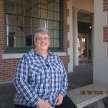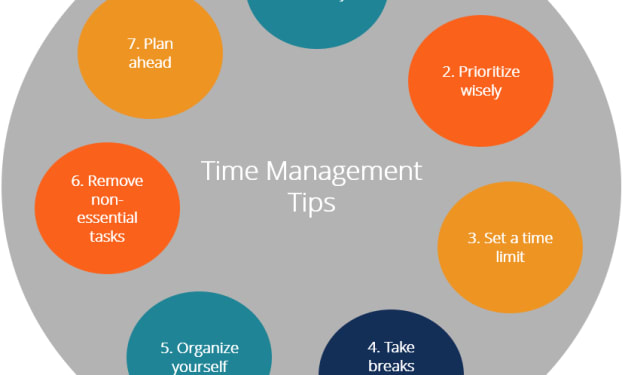Flipping the World on Its Head
Why a flipped classroom in today’s educational setting

Good morning. My name is Kathy O’Neill. And this is Flipping the World on Its Head. We will be looking at a new way of presenting material in a social science setting. In the end, I hope I can answer any questions you may have.
Our objectives for today are an overview of what we will talk about today. We will look at how this quest began for me. We will talk about what a flipped classroom is and what it is not. Additionally, we will discuss what my classroom looked like and how it looks now. Data and results will be the boring part. We will look at my website, which is still under construction. This website when finished will be free and open to anyone and everyone. I know – good money makes lost because I think that education is the great equalizer and when something works, we should share. Then, I will answer any questions you may have. Sound good?
How this began for me… Growing up, I hated history – despised it actually. I grew up in and near Philadelphia. I know – I see those looks – a hotbed of historical do-dads, places, and events. But I hated – HATED – history. I went to Catholic school and every year, one of our field trips was to Independence Hall and Constitution Hall. Other than getting out of the classroom, I never liked these trips. Additionally, I was a sarcastic, smart-ass. One year, I think in about fifth grade, I got into trouble because when the teacher announced that we were going to Independence Hall, again. I asked why because the bell was still cracked, and the dust was still settled. Needless to say, I was placed in the teacher’s group and had to listen to every boring detail on that trip.
Graduating from high school, and going off to college, the history and social sciences professors did not get any better. We have all had that boring history professor, who assigned reading and then lectured from that exact same reading – almost word for word. In the exams, we were expected to give him or her back what they gave us. Regurgitation at its finest. No thinking of any kind required.
After graduating from college, a fine institution, I did the business route. Teaching was not on my horizon. But like always, we end up where we are needed. From the very beginning, I did not want to be that history teacher. Ya know, the boring lecture type. So, I began to what we do in the classroom. Students and I both hated history during high school. I wanted to engage the students in the curriculum. I wanted to help them find their inner love of history. At this point, I need to tell you I am a huge Doctor Who fan. Every year, I tell my students that they are “Time Lords in Training.” At the end of the year, if they passed the class, they are invited to the Time Lord Ascension ceremony… Just a fancy name for an end of the year celebration.
I began to ask questions and research about what was already available. There was extraordinarily little. What I found just led to more questions. The more I researched, the less I realized I knew. I had been through a credentialing program. I thought I was pretty well prepared. But I was not. In frustration, I spoke to a math teacher on campus about what he was doing in his classroom. The students were always excited to go to his class. Dr. E spoke of a flipped classroom. What he told me intrigued me. But everything I read was about science and math. There was very little about a flipped classroom in a social science setting. The gears in my head began to spin. Ideas grew and we were off and running.
We all know the traditional setting. The teacher is the sage on the stage. All information flows through and from them. The students are passive receptacles for information. The only engagement was between the paper and the pen. The students were far from engaged. I would wager a guess of brain dead. And assigned homework, if completed, went into the black hole, otherwise known as a student’s backpack, to never be seen again. In this setting, and sadly my classroom was one of them, the only person learning was me. I taught it to myself every day. If a student was falling behind in taking notes from the lecture, so sad too bad. Get them from someone. This had to change.
On the other hand, a flipped classroom has advantages. The lectures are in video format and the student can move at their own pace. In the classroom, there are hands-on activities that help the students construct their own knowledge. This was exactly what I thought I wanted for my students. What I did not realize was holy moly this was going to be a ton of work for me.
What is a flipped classroom? What would it look like in my classroom? Was I actually insane enough to try this? A flipped concept began in 2007 in a Colorado science classroom. Jon Beggmann and Aaron Sams found the software to record their lectures. The spent a year recording lectures and uploading them to YouTube. The “lecture” portion was then flipped to the homework arena. This allows a student to watch and re-watch the lecture as needed. Another perk was that students could pause the video and come back later if need be.
The flipped classroom allows for instruction to be tailored to meet the needs of the different learning styles for each student. The traditional method only approached the curriculum from one modality. A flipped classroom allows for multiple modalities and avenues. This blended learning gave options I had only dreamed of. Pacing guide adherence meant that if they did not get it on the first try, there was no going back. The student could come in before school, after school, or during their lunch. In all actuality, there was no time for anything but a lecture and maybe a worksheet or two.
In the past, I lectured, lectured, and lectured some more. I went so far as to use the slide outlines and note pages as handouts for the students to take notes on. When that floundered, I made printouts of the notes with blank spaces to fill-in for the students to “take notes” as we went along. In this system, the only person who was remotely learning was me. Not a single student was learning. No one, not even me, was engaged with the material. The hatred of history was all I was perpetuating. It had to change. I had to change.
I started slow. I began by assigning chapter sections to be read and questions to be answered. This reading would lead to a hands-on activity the next day. Then I found videos created by someone else, like the Crash Course series on YouTube, and the students would have to take notes. After the video watching, the next day would be an in-depth activity to help the students build their knowledge. I had been advised to “flip” one class. So that’s what I did in the first semester of the year. In the one class, the students began to learn the steps for an academic read, Socratic seminars, philosophical chairs, and Think – Ink – Pair – Share (T.I.P.S.). The students experienced simulations in order to begin to make connections of the past to the present and to the future.
Students, who did not prepare, were held accountable by their peers. This was the best part to this point for me. Additionally, I added competition to the mix as we went along. Each group was awarded points to use in the class. At the end of the unit, the team with the most points received a prize. Depending on the difficulty of the unit, the prize could be anything from a free pass to an extra ten percent on the exam grade.
Let us see what this looks like in my classroom. The students design an argument for the United States government in U.S. v Lopez. They do not know who will present because the presenter is chosen by pulling a Popsicle stick out of a bag. Greenstick means go and that student presents. This stick is usually drawn in the last five minutes of preparation. Again, students working collaboratively. They are building a response for a Free Response Question, formerly known as an essay question. I realize that exams are individual efforts. But a practice F.R.Q. or a peer graded one is different. With these, the students can help each other see what they have missed or by working together to come up with something brilliant. The only place we expect someone to show mastery of anything by an exam taken individually is in education. Never while I was in the business world did an employee show what they knew by a paper exam. Never – Sorry wrong soapbox. The students create a World War II newspaper. They are allowed the use of electronics. I do not mind if they use their phones – with unlimited data. No, I cannot guarantee that they are not on social media while working. I do wander around the room. I average about 15,000 steps a day. Going back to social media, I want you to consider the last time you were working on something, like lesson planning. How many times did you take a break? 1? 2? 6? More than that? We take breaks but do not give our students the same courtesy. Sorry again – another soapbox for another day. Students build and play board games for studying the Constitution. During a class period, the students will rotate through the class and play the games created by other groups. They are learning through play and do not even realize it. It is a Win-Win.
What did all of this amount to? Let’s look at the educational buzzword… data. I checked these areas… Missing assignments, overall grades, and benchmark scores. The first area was the missing assignments. I compared the students to themselves. Did the number of missing assignments increase or decrease? Then I compared the class average to a traditional setting class. Which setting had a higher number of missing assignments? Next, I looked at overall grades. Again, the students were compared to themselves first. Did the overall grade improve? Then I compared the flipped class average to a traditional class average to see which was higher and what trends if any were there. Finally, I looked at those dreaded standardized tests. This necessary evil for social sciences is only at the district level currently. The past is embedded in the English/Language Arts portion. In this exam, the students are asked to take a historical piece of writing, literature, or art and dissect the piece using the historical setting as a background for the state level. At the district level, we are actually testing content knowledge.
And the envelope please…The Results far exceeded what I expected. Looking at missing assignments, the number of missing assignments improved by forty-three percent. Meaning that 43% of the assignments that were not turned in before were being turned in now. Maybe this has to do with my being present in the classroom and hounding the students to turn in their assignments. Maybe the point system has something to do with it. Maybe the idea of not having to listen to boring lectures after boring lectures helped. Overall grades were up. The students were turning assignments in and test scores went up. Allowing them to collaborate on practice exams or study guides made a huge difference. The students were coming in every day to see what crazy new thing O’Neill had dreamed up for today. Benchmark testing was in the high-mid range. My traditional setting was in the mid-low range. There was a huge disparity between the two settings. I actually felt like I was cheating the students in the traditional setting at this point. The state testing scores were in the mid-high range as well. These students were given opportunities to practice the skills necessary to be successful on the state tests. The idea of taking a test in a manner that has never been seen before is setting the students up for failure. Sorry – soapbox number 4.
The best part of this whole experience is that I don’t have to have all the answers. We used to look at teachers and the know-it-alls of the classroom. In this setting, the students are encouraged to seek answers on their own. No longer is the teacher the sage on the stage but the guide on the side. I do not have to fake it until I make it. The students are empowered to seek answers on their own. This can mean that a student might come up with a way to show mastery that I had not thought of. This gives them control over their education. Control means more buy-in which in turn means more engagement. Too often, we forget that we have graduated from school and have successful careers in education. The students need the tools to become graduates and successful in ways that we haven’t even seen yet.
I have a website that helps me keep everything together. You are welcome to borrow whatever you would like from this website. Share it with your friends. Follow my example or find your own way. One of the greatest gifts from flipping my classroom is that I don’t have all the answers. I have one way that works for my students. Find the way that works for your students. There is no formula for this system. Flipping means doing what works best for your students.
With this entire information overload, are there any questions?
Possible Questions with answers:
1. What do you do for students without internet access?
a. I provide the videos on flash drives or in DVD format. Most students have smartphones and can access the internet. All of the lessons are on the website. They can use their phones to access the videos for the lesson. And I’m at school early and stay late if none of those options work. What I have found is that most students hate history lectures and will find a way to stay successful in this setting.
2. How do you deal with students who are apathetic?
a. The flip in itself will help with that. The students are so busy figuring things out that the apathy goes away. The students are bored because they actually have a say in what we do and how we do it. If they are still apathetic, then you can work with counseling to remove them to a more suitable setting for them. A flipped classroom is not for everyone.
3. What was the biggest non-classroom obstacle?
a. The biggest obstacle was me. I had to get myself out of the way. Other than that, the old boys club. The teachers who say “We’ve done it this way for so long and it’s worked. Why change things?” These people were the biggest non-classroom obstacle. The idea that all students were doing in my room was playing was one of the constant misconceptions that I had to overcome.
My hope is that as you leave here, I have given you something to think about and something to work with. My only focus is on the students who enter my classroom. We become family and we work together to help them find their way in an ever-changing global world.
About the Creator
Kathy O'Neill
A veteran teacher with experience helping students become successful in their own lives beyond high school. Manager on campus as a Department Chair and Coach. Veteran Coach and Veteran leader on campus in the A.V.I.D. Program
Enjoyed the story? Support the Creator.
Subscribe for free to receive all their stories in your feed. You could also pledge your support or give them a one-off tip, letting them know you appreciate their work.






Comments
There are no comments for this story
Be the first to respond and start the conversation.